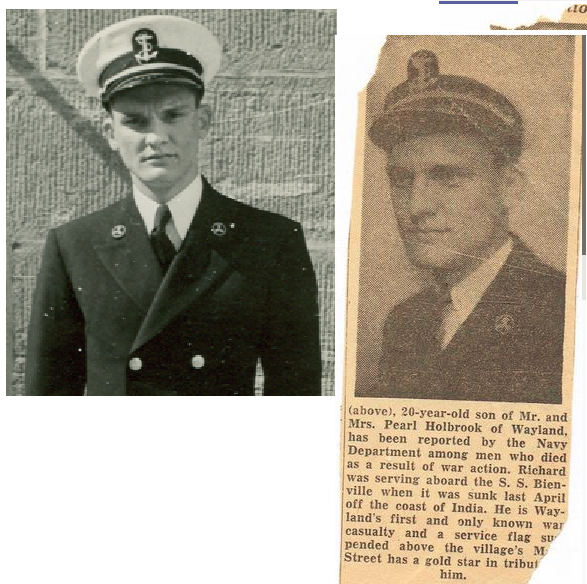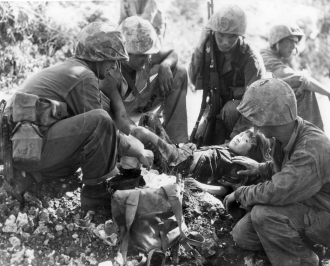Richard Homer Holbrook 1922 - 1942 New York - India
Richard Homer Holbrook
Born: January 9, 1922
Hometown: Wayland, NY
Class: 1943
Service: Merchant Marine
Position / Rank: Engine Cadet
Date / Place of death: April 11, 1942 / Berhampur,
India
Date / Place of burial: April 12, 1942 / Catholic
Cemetery, Berhampur, India
Age: 20
Richard H. Holbrook signed on as Engine Cadet aboard the SS Bienville at the Port of
New York on December 12, 1941, less than a week after the United States officially
entered World War II. He was joined by his Academy classmate, Cadet-Midshipman
Robert W. Corliss who signed on as Deck Cadet. According to Corliss’ report, the
Bienville sailed from New York on December 15, 1941 with a crew of 43 bound for Suez
and other ports in the Middle East as directed. After discharging its cargo the Bienville
was ordered to Calcutta, India to load a cargo of manganese ore, jute, burlap and
general cargo. The ship sailed from Calcutta on April 3, bound for Columbo, Ceylon.
Unfortunately, the ship was also bound for a collision with six Japanese aircraft carriers,
escorted by cruisers and destroyers, that were conducting a raid into the Bay of Bengal
known by the Japanese Navy as “Operation C”.
During the morning 4 to 8 watch on April 6, 1942 Cadet-Midshipman Robert Corliss was
a lookout on the bridge when he heard gunfire ahead. In light of the situation he was
ordered to wake all hands. At 0718 the Bienville was attacked by Japanese aircraft and
was hit at the Number 2 hatch, starting a fire. While the crew was fighting the fire two
more Japanese aircraft attacked the Bienville, but without hitting the ship. At this early
point in the war the Bienville had no defensive armament.
In the growing light the crew of the Bienville saw a Japanese aircraft carrier, later
identified as the IJNS Ryujo, and its escorting cruisers and destroyers. The captain
attempted to run from the Japanese fleet and lay a smoke screen to hide behind.
However, their efforts were in vain. At about 0740 a Japanese cruiser, identified after
the war as the heavy cruiser IJNS Chokai, opened fire from less than two miles away,
hitting the ship at least five times, severely wounding Richard Holbrook.
Date & Place:
Not specified or unknown.


 Debby Stevens
Debby Stevens 





